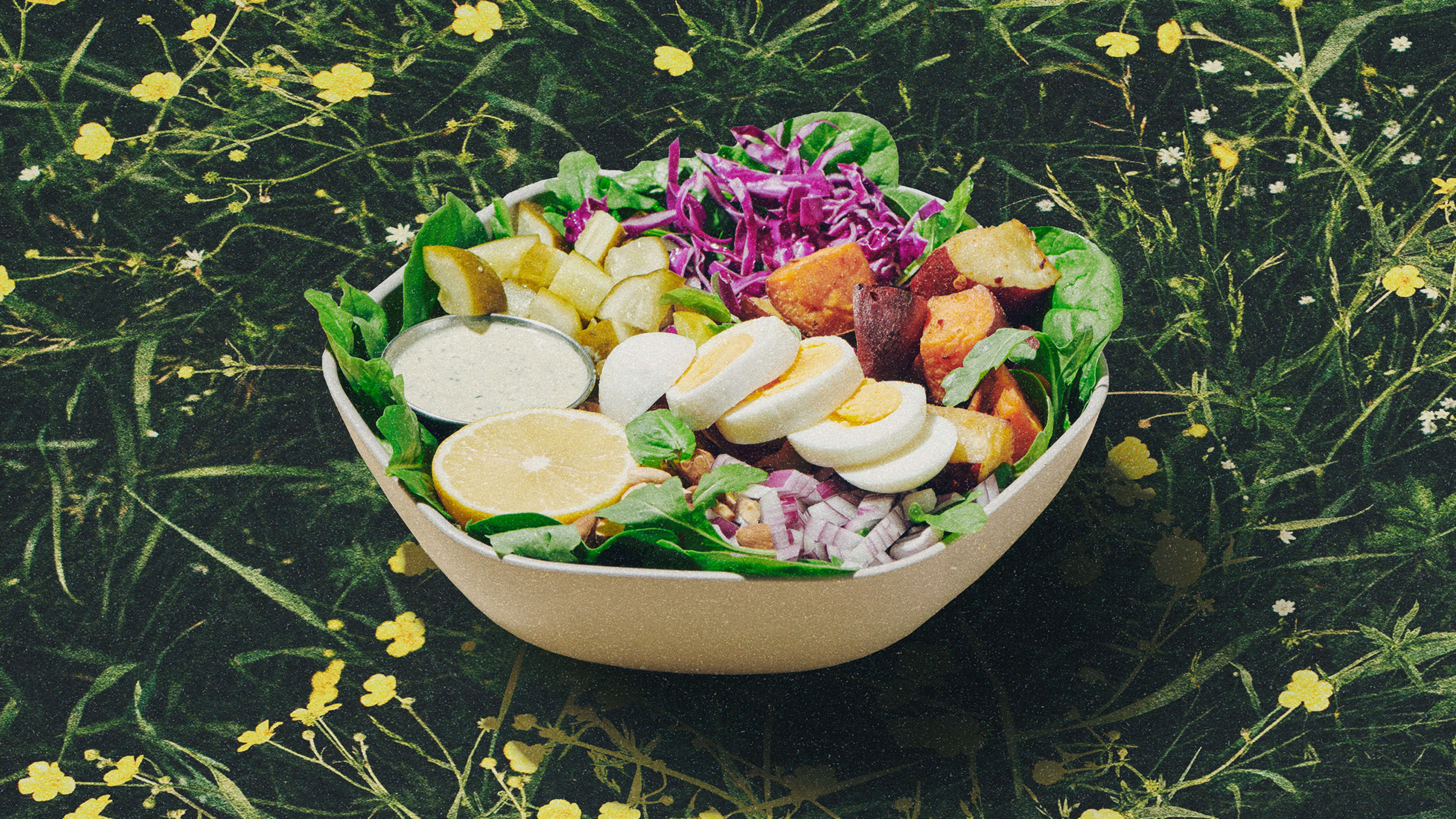With a menu focused on plants, the salad chain Sweetgreen automatically has a lower carbon footprint than a typical fast-food chain serving millions of burgers. But the company now plans to go a step further, setting the goal of cutting its carbon footprint in half in the next six years. The rest of its emissions will be offset, making the company carbon neutral.
Over the last year, the restaurant chain worked with Watershed, a software platform that helps companies reduce emissions, to calculate its current footprint in obsessive detail. “The first step for us was just to measure and really understand where we’re at so we can make the right investments and set the right goals and the right reductions,” says Sweetgreen co-CEO and cofounder Nic Jammet.
That involved traveling to every supplier to look at specific practices, such as the type of cattle feed used on a dairy farm or how it processes manure (some farms turn cow poop into energy, for example, instead of letting methane, a potent greenhouse gas, escape into the atmosphere). Understanding that level of detail is necessary, says Watershed cofounder Taylor Francis, rather than relying on stats such as the average footprint of something like parmesan cheese.
“There’s significant differences in how suppliers produce different foods, and those approaches have really significant carbon impact,” Francis says. “If Sweetgreen sources from the 10% most sustainable suppliers, who are using cover crops, and methane digesters, and all these practices that we know reduce carbon, that would cut the food production footprint in half, without changing anything about the menu. That means that people can still go in and eat exactly what they eat today, but just because the way the food is produced has changed, carbon gets cut in half.”
The company can use the data to choose suppliers or to help suppliers make investments to reduce each farm’s footprint. It’s also using the numbers to tweak its menu. “It’s kind of amazing to see menu design decisions made thinking about carbon alongside all the other factors,” says Francis. “I’m not aware of another restaurant doing the same thing.”
Menu changes might include replacing some ingredients, or adding new ingredients such as cover crops—plants such as clover that can grow between main crops on a farm and that can help store more carbon in the soil. “We’ve been playing with buckwheat and clover and a bunch of other things in the lab and trying to incorporate those into our core menu,” says Jammet. Last year, the company introduced a salad featuring kelp, because growing seaweed actually captures more carbon than it emits. It also considers ingredients that can reduce food waste; a few years ago, for example, it started using broccoli leaves in a salad after a farmer told them that the leaves would otherwise be wasted.
The company also plans to make changes inside its buildings, including switching to clean energy and more efficient appliances, and is looking at every other aspect of its footprint, from how customers dispose of its compostable bowls to the emissions from delivery. (On the other hand, the company is also beginning to roll out new drive-through restaurants, something that is likely to increase emissions as it encourages customers to drive.) Jammet says they don’t yet have every piece of their carbon reduction plan mapped out, but they think that the 50% goal is achievable. The emissions that can’t be cut will be offset, so the chain will be carbon neutral by 2027.
Sweetgreen sees it as a good business decision. “We think about Sweetgreen in 30 years, and our ability as a country to grow food, and how climate change might affect our business,” Jammet says. “And if we actually want our business to be successful—I’m talking about putting my capitalism hat on here—in the long term, we just think this is the right thing to do. In general, it’s this mentality around what’s good for the planet and good for business don’t have to be mutually exclusive. There’s a business case for this.”
Recognize your brand’s excellence by applying to this year’s Brands That Matter Awards before the early-rate deadline, May 3.
